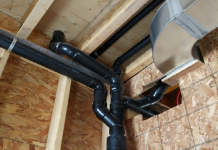Purlins are secondary structural systems that help support the main structure of a building. They can be used in homes and commercial properties. However, they’re often found in commercial buildings where the roof needs additional support.
Commercial roof purlins can be made from various materials, including metal and wood. There are two main types of purlin: end or side purlin. End purlins attach to rafters on either end of a building’s attic space. In contrast, side purlins connect wall framing at various heights along its length.
Purlins are the secondary horizontal members in a building’s framing.
The purlins are the secondary horizontal members in a building’s framing. They’re important to the structure, but they can’t do their job without you. So if you want your building to stand up straight and last as long as possible, it’s up to you to ensure that all of those little parts stay firmly connected.
Purlins can be simply steel sheeting or more complex structures to support the roof sheeting.
- Purlins are the secondary horizontal members in a building’s framing.
- They provide support for roof sheeting and usually span between rafters or trusses, often at intervals of every two feet or so.
- There are two main types of purlin, including side and end
There are two main types of purlin, including side and end.
To support the roof sheeting, a horizontal structural purlin can be used. Purlins are secondary horizontal members in a building’s framing and can be simply steel sheeting or more complex structures. They support beams called rafters, which in turn support the load of the roof slates or tiles.
Side purlins are used to hold up wall framing.
Side purlins hold up wall framing, typically steel or wood. You can also use both, but they will not be covered right now because it’s not relevant to this article. The point is that side purlins help support the roof by connecting it with walls.
End purlins attach to the rafters to form the roof’s ridge.
It’s important to note that end purlins are attached to the rafters to form the roof’s ridge. End purlins are usually made from steel, but they can also be made from other materials such as aluminium or wood.
There are secondary systems that work with the main structural systems in buildings.
When you think of a building’s structural system, you probably picture its main framework: the beams, columns, and walls that hold it up. But secondary systems also work with these main components to help support the roof or wall sheeting. One such component is called a purlin.
Purlins are horizontal members that run parallel to the top plate of your structure. They’re usually made of steel (and sometimes wood), and they can be simple or very complex depending on how much strength your structure demands from them. The most common use for purlins is in roofs—they help support roof sheeting like asphalt shingles or metal panels. When used as part of wall framing, purlins may help prevent sagging walls by providing horizontal support for studs and joists above them; this also helps reduce load stress on windows and doors located below these openings if they’re not properly reinforced by larger headers above them which could otherwise cause damage if left unchecked over time due to excessive pressure exerted against them during earthquakes/tornadoes etcetera, so contractors must take care when installing these types.
Conclusion
And that’s all you need to know about commercial roof purlins. The information provided in this article will help you understand this building system better and give you the confidence to use it in your next project!






I don’t think the title of your article matches the content lol. Just kidding, mainly because I had some doubts after reading the article.